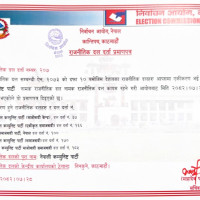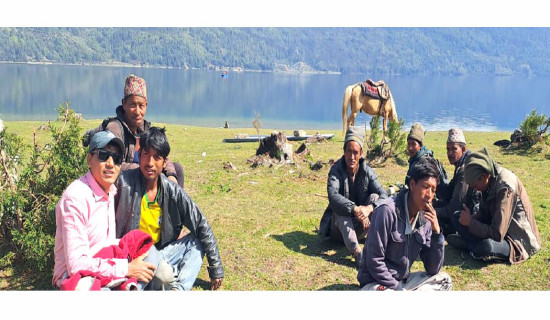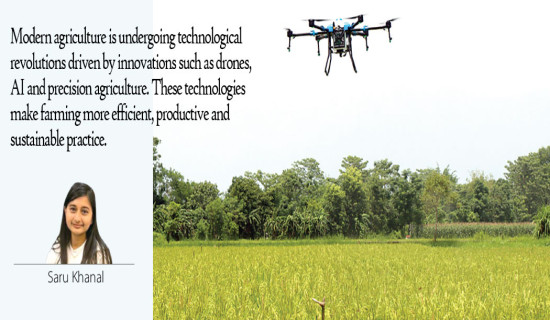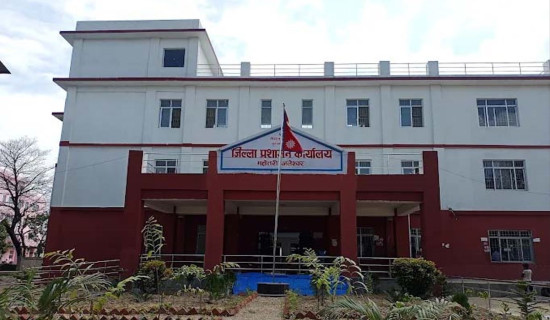- Friday, 14 November 2025
Falcha-style bus stops blend culture with commuting in Kathmandu
BY SUSHMA MAHARJAN,Kathmandu, May 28: At midday, under the blazing Kathmandu sun, commuters gather at various bus stops, including the one at Bijulibazzar. But this particular stop is unlike the typical concrete-and-metal structures seen around the city. Instead, it reflects Kathmandu’s rich culture, art and architectural legacy -- a falcha-style bus stop.
Traditionally, a bus stop serves as a simple waiting space for public transportation. However, the Kathmandu Metropolitan City (KMC) has reimagined this everyday infrastructure by introducing falcha-style bus stops, blending urban development with cultural preservation.
A falcha, a term derived from the Newar language, is a traditional roadside shelter often located near temples, chowks or community spaces. Historically, these wooden structures served as resting places and gathering spots for locals and travelers alike. Known for their intricate wood carvings and distinctive sloped tile roofs, falchas are deeply embedded in Kathmandu Valley’s cultural heritage.
Recognising their cultural significance, the metropolis initiated the construction of falcha inspired bus stops at Bijulibazzar area in the fiscal year 2023/24 under its pride project. The first two falcha-style bus stops, located along the Araniko Highway in the Baneshwor area, near the Department of Drug Administration, one on each side of the road, have been already completed and are in use. The first was inaugurated on May 14, 2024, by Ward No. 10 Chairman Ram Kumar KC and the second on June 2, 2024, by Deputy Mayor Sunita Dangol. Together, the two structures cost Rs 5.6 million.
The KMC is replicating the model to build nearly two dozen falchas in various parts of the city. According to Rabindra Rijal, senior engineer at KMC’s Heritage and Tourism Department, the KMC assigned the project to two construction companies in last February with a completion deadline of February, 2026. The plan includes constructing 22 falcha-style bus stops across the metropolis at an estimated cost of Rs. 90 million.
Rijal informed that already 14 of these bus stops are at their final stage with foundation and roof being completed.
They include one each in Kalanki, Babarmahal, Basundhara Ring Road and Bishalnagar area and two each in Baneshwor, Minbhawan, Tinkune, Chabahil and Baluwatar area. Additional construction is now under way in the Sinamangal and Koteshwor areas.
Each falcha is designed with a 13-foot width and a 21-foot open space, constructed using carved wood and traditional Newar roofing techniques. They include proper seating with a capacity of up to 20/22 people.
Meanwhile, Mayor Balendra Shah also recently shared the vision behind the initiative in his Facebook. He wrote, "Falchas have long been centres of social harmony and cultural identity in Kathmandu. In this era of rapid urbanization, preserving and promoting these traditional rest stops isn’t just about heritage, it’s about weaving our cultural roots into modern development. That’s why we are building artistically designed, accessible falchas at the bus stops across the city, to regard our past while serving our present."
This initiative has not only addressed the long-overlooked condition of public bus stops but has also enhanced the city's visual appeal through culturally inspired designs. The black-and-red bordered ceremonial jhhallars along the rooflines of these structures gives a vibrant traditional touch, helping them stand out amid the urban traffic.



-original-thumb.jpg)
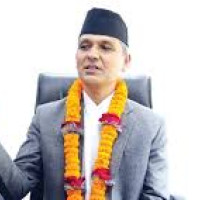
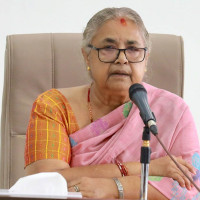
-original-thumb.jpg)

